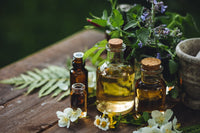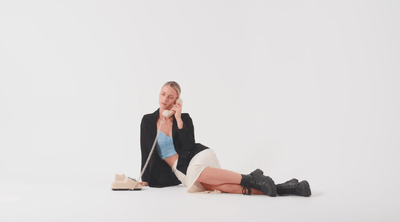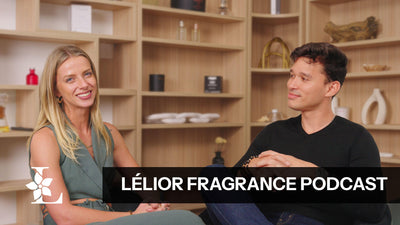No matter how spotless your home is, odors in carpets and upholstery can creep in quietly and linger for far too long. From muddy paw prints and food spills to daily wear and tear, your soft furnishings can trap smells and compromise the freshness of your space.
But before you reach for chemical-heavy sprays or overpowering deodorizers, it’s important to know: there are safer, non-toxic ways to eliminate those odors—without risking irritation to your skin, lungs, pets, or fabrics. The key is to neutralize the smell at the source using natural, fabric-safe, and effective methods.
In this blog, we’ll walk you through expert-approved strategies that will leave your upholstery and carpets truly fresh—not just masked—while keeping your home environment healthy and safe.
Baking Soda: The Natural Odor Absorber

Why it Works:
Baking soda (sodium bicarbonate) is one of the most trusted natural deodorizers. It works by absorbing moisture and trapping odor molecules, making it a go-to for both carpet and upholstery cleaning.
How to Use It Safely:
- Carpets: Sprinkle a generous layer of baking soda across the affected area. Use your hands or a soft brush to work it gently into the fibers. Let it sit for at least 4–6 hours—overnight for stronger odors.
- Upholstery: Lightly sprinkle baking soda over cushions, armrests, or fabric surfaces. Allow it to rest for several hours before vacuuming with an upholstery attachment.
- Vacuum thoroughly: Use a vacuum cleaner with a HEPA filter if possible to remove all traces of the powder.
Pro Tips:
- Add a few drops of essential oil (like lavender or eucalyptus) to the baking soda for a subtle, fresh scent boost.
- Repeat weekly or monthly depending on odor severity.
Why It’s Safe:
Baking soda is non-toxic, inexpensive, and effective, making it a family- and pet-friendly choice for odor control.
Would you like me to continue with Section III: Vinegar Solution: The Odor Neutralizer and Section IV: Enzyme Cleaners next?
Vinegar Solution: The Odor Neutralizer
Why It Works:
White vinegar is a natural powerhouse when it comes to neutralizing odors. Its acetic acid content helps break down the molecules that cause unpleasant smells—especially from food, pets, and general mustiness.
How to Use It Safely:
- Create a spray: Mix equal parts white vinegar and water in a clean spray bottle.
- Test first: Spray a small, hidden area of your carpet or upholstery to ensure it won’t discolor or damage the fabric.
- Light misting: Lightly mist the affected area—never soak the surface—to avoid over-wetting. Let it air dry completely.
- Repeat if needed: The vinegar scent will fade as it dries, taking the odor with it.
Pro Tips:
- For extra deodorizing power, add a few drops of lemon or tea tree essential oil to the vinegar solution.
- Don’t use on natural stone or delicate fabrics like silk or velvet.
Why It’s Safe:
Vinegar is a non-toxic, eco-friendly option that’s safe for most households and gentle enough for regular use when diluted properly.
Enzyme Cleaners: For Organic Odors

Why They Work:
Unlike standard cleaners, enzyme-based products contain natural enzymes that break down organic matter—like pet urine, food spills, sweat, or body oils—at the molecular level. This not only eliminates the odor but prevents it from returning.
How to Use Them Safely:
- Choose a pet-safe, fabric-appropriate enzyme cleaner.
- Spot test: Always test on a small, inconspicuous area first.
- Apply according to directions: Spray onto the odor source, allow time for the enzymes to work (typically 10–30 minutes), then blot or let dry.
- Repeat for heavy odors.
Pro Tips:
- Enzyme cleaners are ideal for pet stains, sweaty upholstery, or food-related smells.
- For best results, use immediately after a spill or accident before the odor sets in.
Why It’s Safe:
Most high-quality enzyme cleaners are non-toxic, biodegradable, and pet-friendly, making them a top choice for households with kids or animals.
Steam Cleaning: Deep and Chemical-Free
Why It Works:
Steam cleaning uses the natural power of hot water vapor to penetrate deep into carpet and upholstery fibers, breaking down odor-causing bacteria, dirt, and allergens—without the need for harsh chemicals.
How to Use It Safely:
- Choose the right equipment: Use a home steam cleaner or rent one with upholstery attachments.
- Vacuum first: Always vacuum the surface to remove loose debris before steam cleaning.
- Use distilled water: This avoids mineral buildup and ensures a cleaner steam output.
- Let it dry fully: After cleaning, allow the area to dry thoroughly with fans or open windows to prevent mold or mildew.
Pro Tips:
- For extra odor-fighting power, you can add a few drops of essential oil (like eucalyptus or lavender) to the water tank—only if your machine allows it.
- Avoid using steam cleaners on delicate or water-sensitive fabrics like silk or leather.
Why It’s Safe:
Steam cleaning is chemical-free, making it an excellent choice for homes with babies, pets, or allergy sensitivities.
Other Safe Natural Options
Vodka: The Surprisingly Effective Deodorizer
Vodka’s high alcohol content makes it a gentle disinfectant that kills odor-causing bacteria without leaving behind residue.
How to use:
- Fill a spray bottle with plain vodka (cheap is fine!) and lightly mist affected areas.
- Let it air dry—there’s no need to rinse.
- Safe for most fabrics, but always spot test first.
Essential Oils: Add a Scent Boost, Naturally
When used in moderation, essential oils like lavender, tea tree, eucalyptus, or lemon can freshen your space without the synthetic chemicals found in commercial air fresheners.
How to use:
- Mix a few drops of essential oil into baking soda before applying.
· Or add to a DIY fabric spray (distilled water + a splash of alcohol + essential oils). Lèlior also has all-natural linen sprays in a variety of scents that will help freshen your linens, naturally
- Avoid direct contact with sensitive surfaces or skin.
Why These Work:
Both vodka and essential oils offer natural, non-toxic ways to enhance freshness—great companions to odor-eliminating techniques rather than cover-ups.
🛋️ Important Safety Tips
Fresh scent is fabulous—but not at the cost of fabric, fur babies, or your sanity. Keep these safe-cleaning principles front and center:
- Test first, always. Whether it’s vinegar, vodka, or an enzyme cleaner, dab a hidden corner before treating the whole surface.
- Mind the fabric tags. Upholstery made from wool, silk, or vintage textiles may need special care—or a professional touch.
- Skip the soaking. Oversaturating fabric is a shortcut to mildew. Mist lightly, blot gently, and let everything dry fully.
- Stick with non-toxic products. If it smells like a chemical plant, it’s not the vibe. Choose child- and pet-safe deodorizing solutions to stay fresh and safe.
🧼 When to Seek Professional Help

Sometimes, the best scent strategy is letting the pros handle it:
- Persistent odors (think pet urine, smoke, or mildew) might require deep extraction or ozone treatment.
- Delicate upholstery or rugs made of natural fibers? Call a certified cleaner who knows what they're doing.
- Big cleanup after renovation or flooding? Bring in reinforcements for an odor-free reset.
Professional-grade care doesn’t just eliminate odor—it extends the life of your furnishings and restores peace of mind.
✨ Final Takeaway: Neutralize First, Then Fragrance
The best-smelling homes don’t just cover odors—they clear the air before adding in the magic. By starting with smart, safe odor removal, you create a clean canvas for the scents you love to truly shine.
Sniff-worthy tip: Once the air is clean, then it’s time to bring in the beautiful—use a cold-air diffuser with essential oils, simmer stovetop potpourri, or mist your space with a pet-safe linen spray. Your signature scent deserves to be the star—not a cover-up act.
Frequently Asked Questions
🧽 FAQ: What’s the safest way to deodorize upholstery naturally?
The safest natural deodorizer for upholstery is baking soda. It absorbs odors without introducing harsh chemicals. Sprinkle it lightly over the fabric, let it sit overnight, and vacuum thoroughly. For a fresh scent boost, you can mix in a few drops of pet-safe essential oil, like lavender.
🚫 FAQ: Can I use vinegar on all types of carpet and upholstery?
Not always. White vinegar is excellent for neutralizing odors, but it’s not ideal for delicate fabrics like silk or certain wools. Always check the care label and spot-test a hidden area first. For sensitive materials, opt for a specialized enzyme cleaner or consult a professional.
🐶 FAQ: Are enzyme cleaners safe for homes with pets?
Yes—most enzyme-based cleaners are pet-safe, especially those designed for pet accidents. These products break down organic odors (like urine or food spills) at the source. Still, always check the label and allow treated areas to dry before letting pets return to the spot.
💨 FAQ: How can I freshen carpet without using commercial sprays?
Try this: sprinkle baking soda infused with essential oil over the carpet, wait a few hours, then vacuum. You can also lightly mist with diluted white vinegar or use a steam cleaner. Bonus: place charcoal bags or coffee grounds in corners to absorb lingering smells naturally.
🧺 FAQ: When should I call a professional to treat carpet or upholstery odors?
If you’ve tried natural deodorizers, spot treatments, and steam cleaning—and the odor still lingers—it’s time to bring in a pro. Persistent smells (like pet accidents, mildew, or smoke) may require deep extraction, dry cleaning, or ozone treatment that’s safest when handled professionally.








